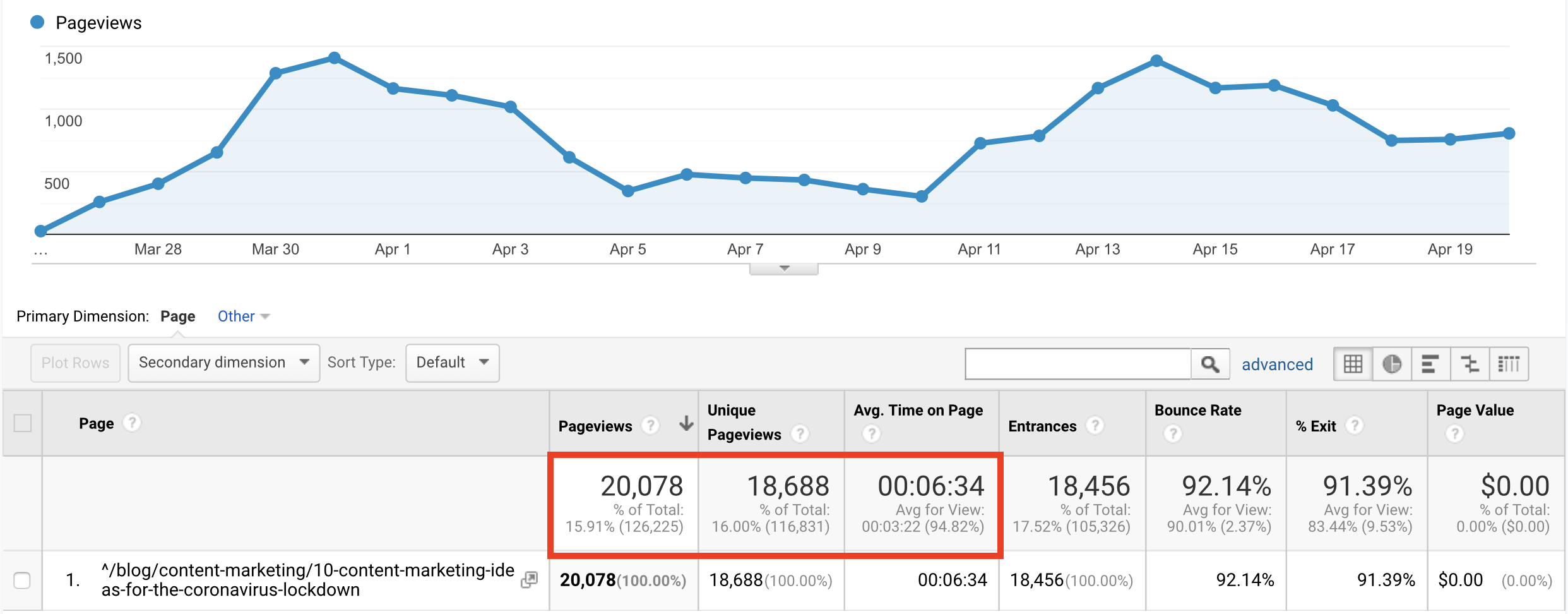A lot of marketers are scratching their heads wondering how they can add value to their company, to their customers and to the world at large.
To be honest, we’re figuring it out as we go.
But we’ve learned a lot in a short time through research, surveys, conversations with clients and feedback from our audience.
One of our earliest lessons was that some of the things we’re good at are just not as effective or useful now as they were a month ago. Rather than dig our heels in and try to stay the course, we knew we had to refocus our energy.
We decided the only way to add value as marketers was by figuring out what our target audience needed most, and delivering it. That meant shifting our focus away from some marketing efforts and toward others.
And while this is all still a work in progress, we thought it might be helpful if we walked through 5 of the steps involved in this transition:
Step 1: Figure out what your target audience needs right now
Rule No. 1 of marketing is “know your audience.” That means knowing its priorities. And during a pandemic, priorities shift.
You may have already seen it happen. An otherwise inexplicable drop in the amount of engagement with your blog after a year of steady growth, for instance, is a clear indicator that you need to rethink the relevance of your content.
In our case, we quickly realized that our usual marketing and SEO content was generating fewer conversions. Considering nothing else had really changed for us, it was fairly easy to deduce that this was a coronavirus-related plateau.
Our target persona, who might normally be highly invested in knowing the difference between, say, a 301 vs. 302 redirect, was suddenly busy figuring out how to communicate a COVID-19 response to customers and leads already in the pipeline.
This realization spurred our decision to launch a COVID-19 Resource Hub. And that led to the highest-performing piece of content we’ve created in a while. Since posting in March, this single piece of content has accounted for nearly 16% of our site’s total page views.

Step 2: Be cautious with paid campaigns
Unless you’re working in one of the few industries that’s seeing influxes of new business, be wary of anything paid for a little while – especially if you’re seeing a dropoff in inbound leads.
If leads are being scared off by COVID-19, chasing after them with ads will, at best, do nothing, and at worst, annoy them. A lot of businesses are tightening their belts right now, and no amount of greasing up the sales funnel with retargeting campaigns and other paid advertising plays can change that.
Display ads and paid search results have a relatively low click-through rate to begin with (3-5% for paid search, 0.1% for display). If intent to buy has fallen in your target market, there’s even less reason to click on an ad now.
Again, a possible exception is if you’re in an industry that’s seeing an increase in inbound business, or if you’re trying to get the word out about your service being temporarily free or discounted for certain professionals.
Circumstances may change in a month or two depending on how much longer the lockdowns continue, and what sort of pent-up demand emerges.
But for now, we don’t think you’re going to change very many minds with a 300×250 interruption to a pandemic-stricken audience.
Plus, there are better ways to promote your content (more on that in step 4).
Step 3: Start thinking more like a content marketer
Our consultants have never spent more time focusing on messaging and content planning as they are right now.
Julie Woon, Brafton’s Director of Consulting – which handles the technical and strategic sides of digital marketing – had this to say:
“I’ve been mostly focused on helping clients balance between acknowledging everything that is going on and addressing any new needs their customers might have due to the virus while not coming off as taking advantage of their customers during a hard time.”
She added: “For some clients, this means being more proactive in addressing problems head-on. For others, this has been finding ways to respectfully take a step back and keep things more light-hearted. It really depends on the industry and the services the client offers.”
Keep in mind that messaging is a living, breathing thing. As peoples’ experiences with this situation evolve, the type of content they’ll find useful and appropriate for the situation may (and likely will) change.
But the one thing that won’t change is that they will be most receptive and appreciative of any content that’s actually helpful right now.
And marketing experts are pivotal in helping businesses and content creators figure out how to shape messaging and deliver it with content.
Step 4: Lean into email marketing and social media
A recent article from the Content Marketing Institute had a great quote about content marketing during this time:
“Act like a publisher of content (not a marketer of content).”
And we agree. Now is the time to create and publish content that speaks to the information gaps your audience might be encountering. Ask: What do they need right now? What are they missing? Figure that out and publish that type of content. Your audience will subscribe to your newsletter if you’ve succeeded because it means they actually want to hear what you have to say.
Once that happens, don’t be afraid to send 3 or 4 content updates a week directly to their inbox. Use UTM codes to see how much of the traffic to your content is coming through email.
Likewise, make sure you’re also sharing your content on social media. People will be a lot more receptive to a helpful headline popping into their feed organically right now than a tone-deaf ad in the margins.
A recent survey we conducted corroborates these instincts: Email and social media are the two most heavily leaned on channels for COVID-19 messaging and content distribution.
Step 5: Don’t gate COVID-19 content
This one is pretty straightforward.
Now is not the time for quid pro quos. You have to be genuinely helpful, and that means making all of your most valuable COVID-19-related content completely ungated.
It might go against every lead generation instinct you have, but being truly helpful right now will give readers a reason to remember you when things start looking up in the future.
Plus, your COVID-19 content has a shelf-life. The more available you make it now, the better.
A few closing thoughts
The only exception to a lot of what we’ve discussed in this blog is any target audiences you may have that are actually seeing more business right now (e-commerce, computer networking and software, online gaming, etc.).
And even then, consider ditching the ads (they’re highly impersonal in a time when people need empathy and understanding), and be extremely careful about how you phrase any sales drips. You don’t want to come across as being a vulture, and you definitely don’t want to harp on the fact that these companies are benefiting.
No one wants to be reminded that a pandemic is the reason their sales are up.
Otherwise, your one mantra as a marketer right now is, and must be, “be helpful.” Say it under your breath with each sentence you write.
And as always, from our team to yours: stay home, stay healthy and stay positive.
We’ll get through this in due time.





